'Vicarious trauma': How Austin, Travis County deal with low staffing at 911 call centers
Editor's note: This story has been updated to correctly identify 911 call takers Candace Pearson and Valerie Padier in photo captions and to show that 911 call takers and dispatchers in Austin can train for both positions.
Zach Michalka was driving home with his wife one Friday night in late July when they noticed a car swerving in and out of lanes. The driver appeared to be intoxicated; the couple called 911.
They heard this recording: “You have reached Austin 911. Do not hang up. Please hold for the next available call taker.” They listened to the recording repeat for about five minutes while following the driver until the car evaded them. No one ever answered, and no one ever called back.
“Luckily, we weren't in a life-or-death situation," Michalka said, but the lack of response made him wonder, “What is happening if somebody's (in a) life-or-death situation?”
More: Austin 911 in crisis due to call taker shortage, long wait times
As Austin deals with historic vacancies in its police force, emergency medical services and 911 call center, stories like Michalka’s have spread for months. Although the city has made improvements in the past year by hiring more people, it’s still not meeting national standards.
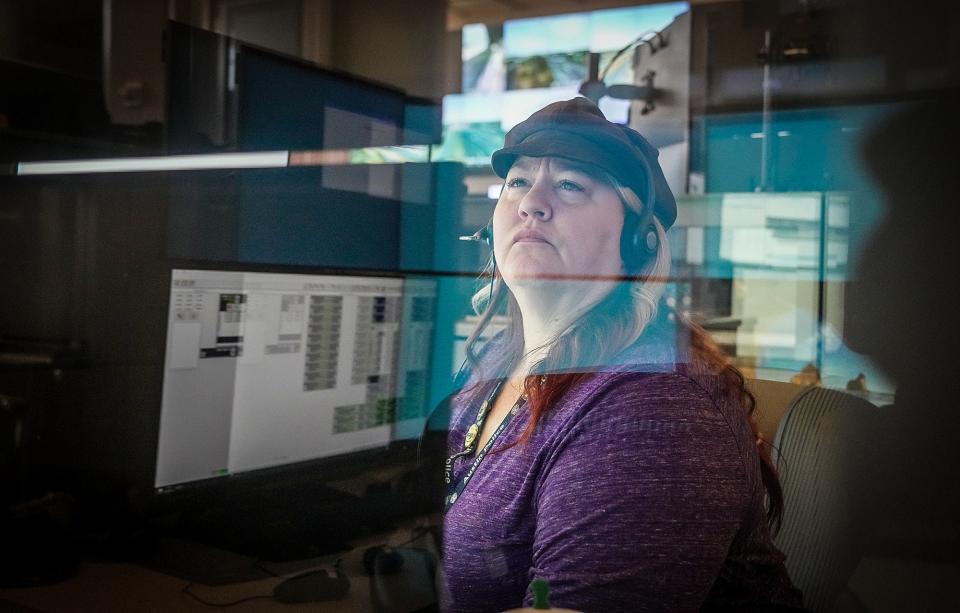
There’s nearly a 37% vacancy rate at the city level for fully trained 911 call takers and dispatchers. Countywide, the vacancy rate is nearly 57% for fully trained emergency telecommunicators. But this issue, as with police and EMS, is not unique to Austin. Experts told the American-Statesman that nationally there’s about a 30% average shortage of emergency telecommunicators.
Similar to other jobs in public safety, the vacancies are being driven by multiple factors: It’s a job with long hours; there’s a constant barrage of trauma; it’s a skilled trade that takes months of training; and people can find similar, better-paying jobs in the private sector.
To help fill vacancies in Travis County, where some employees have described the working conditions as "atrocious" due to low staffing, the union that represents county and city employees said it is pushing for more incentives to retain employees countywide.
More: 'Nail in the coffin': How Austin-Travis County EMS is grappling with ongoing vacancies
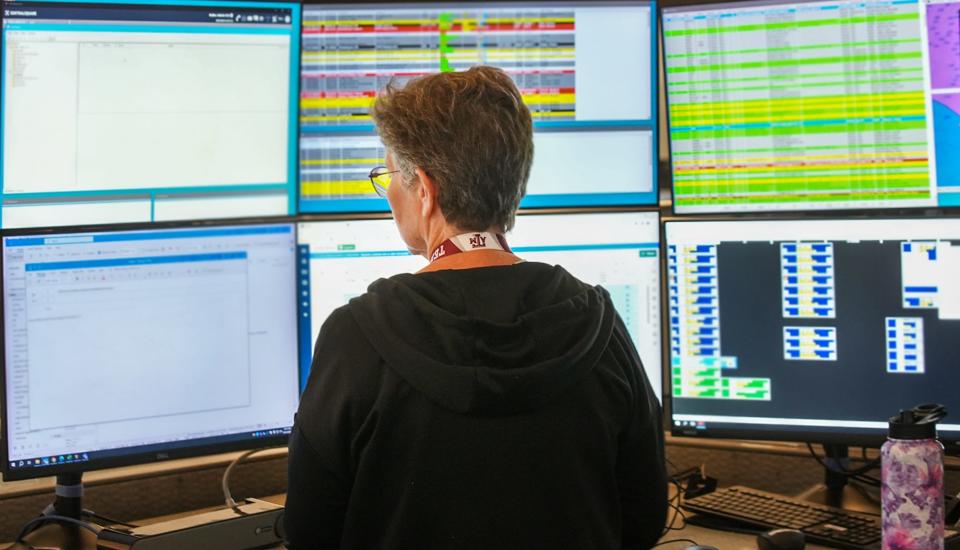
What is driving vacancies in emergency call centers?
Austin’s 911 call center is housed within the Police Department. For Travis County, it's in the sheriff's office. When you call 911, a call taker will ask if you need police, fire, EMS or mental health services.
If you need police, that call taker can help you. But if you need fire or EMS, you’ll be patched through to one of their services.
A dispatcher will work to send units to the caller’s location. In the city, people who work as dispatchers and 911 call takers can train for both positions. In the county, everyone is trained as both a call taker and a dispatcher.
As of August, the city had five vacant positions for dispatchers out of 75. For 911 call takers, there were 32 vacant positions out of 104.
In data provided to the Statesman, the city included in its staffing numbers people who are currently in training and cannot yet work on their own. Of the filled positions, 16 are in training to be call takers and 13 to be dispatchers.
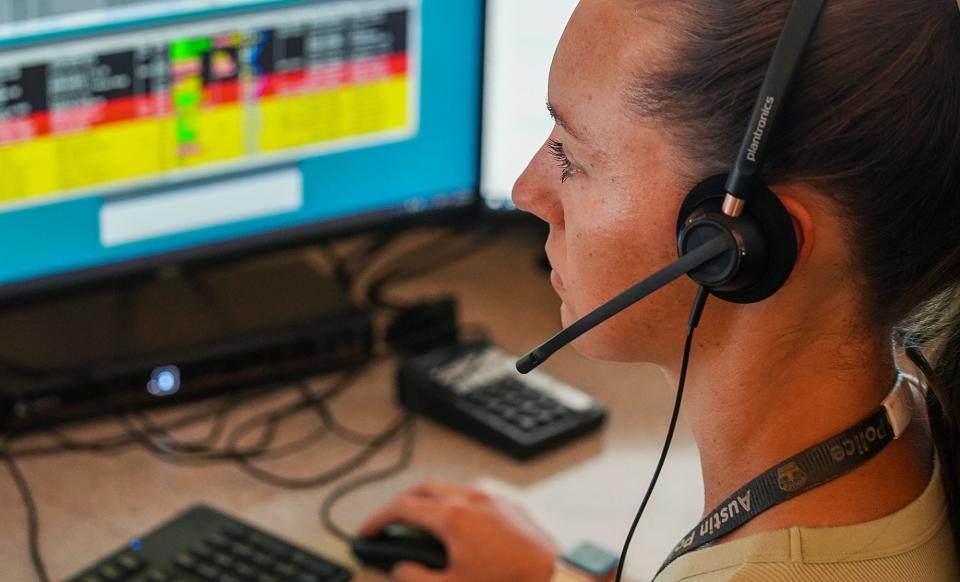
Lt. Maria Calagna, who oversees the city's 911 call center, said the issues in Austin are driven in part by the stress of the job and the inability to work from home.
April Heinze, the 911 and public safety answering point director for the National Emergency Number Association, said 911 call centers have often dealt with high turnover rates due to the stressful nature of the job.
"They take on large amounts of vicarious trauma each and every day because they're hearing people go through their worst moments; they're walking them through to help them through their worst moments," Heinze said. "And it goes from one call to the next to the next to the next."
And the pay has never been enough to be competitive with other jobs people can get that are less stressful, Heinze said.
The Austin Police Department reduced its training timeline, but it can take a few months to complete the training. Both call takers and dispatchers have about four to six weeks of classroom training, and then they move into on-the-job training, which is four to six weeks for call takers and eight to 12 weeks for dispatchers.
How do Austin and Travis County compare?
Travis County faces a much bigger shortage of workers than Austin does, at nearly 60% for people who are fully trained.
Even with the higher vacancy rate, the county answered calls in 15 seconds or less 87.3% of the time in May. In comparison, the city answered calls in 15 seconds or less 72.6% of the time. The National Emergency Number Association set a standard that calls should be answered in 15 seconds or less 90% of the time.
For the city, this is an improvement from about a year ago, when calls were being answered in that time frame 65.5% of the time, according to previous reporting by the Statesman. Staffing numbers have improved since then in the city's call center.
A key difference between the city and county, though, is that the Travis County sheriff's office did not change its staffing minimums as the Austin Police Department did, said Krissy O'Brien, an organizer with AFSCME Local 1624, the union that represents county and city employees. Minimum staffing rules set the number of employees required to be on the floor answering calls, and lowering the number was meant to avoid overworking employees.
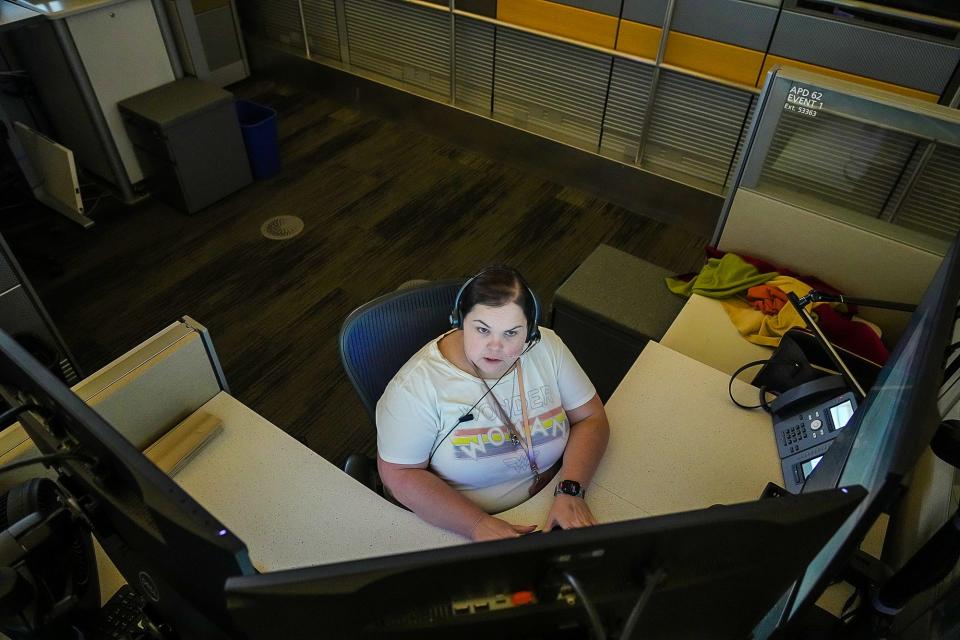
Both the city and the county have the same staffing minimum of six employees working the floor, O’Brien said, even though Austin generally has a higher number of calls. Calagna said that as staffing numbers increase, the minimum will go up.
Though changing the staffing minimums is good for the employees, she said, it has the negative effect of causing more people to be placed on hold or have to wait longer for their call to be answered.
Kristen Dark, public information officer for the sheriff's office, said 24 of the 40 positions are currently filled, making the vacancy rate 40%. However, O'Brien said 17 of the 24 employees are fully trained, making it a 57% vacancy rate.
Dark said that during the week of Sept. 4, nine other people passed their background checks to begin training.
With the high vacancy rate comes mandatory overtime at the county, forcing people to regularly work full shifts on their days off and sometimes 14-hour days.
On top of the high vacancy rate, the county has been fielding more calls for service in the past few years. That's in part because when the city has an overage of calls some of those bounce to the county.
May and June each had at least a dozen days with more than 700 emergency calls — compared with only a handful of such days in May and June of 2021.
Dark said out of 16 people who have started training this year, five have made it through, seven are still in training and four quit.
Working in the county's 911 call center requires six to nine weeks of classroom training and 10 weeks of supervised training taking calls, Dark said.
"Our 911 Telecommunicators are doing a truly remarkable job despite the heavy load they’re carrying," Dark said in a statement.
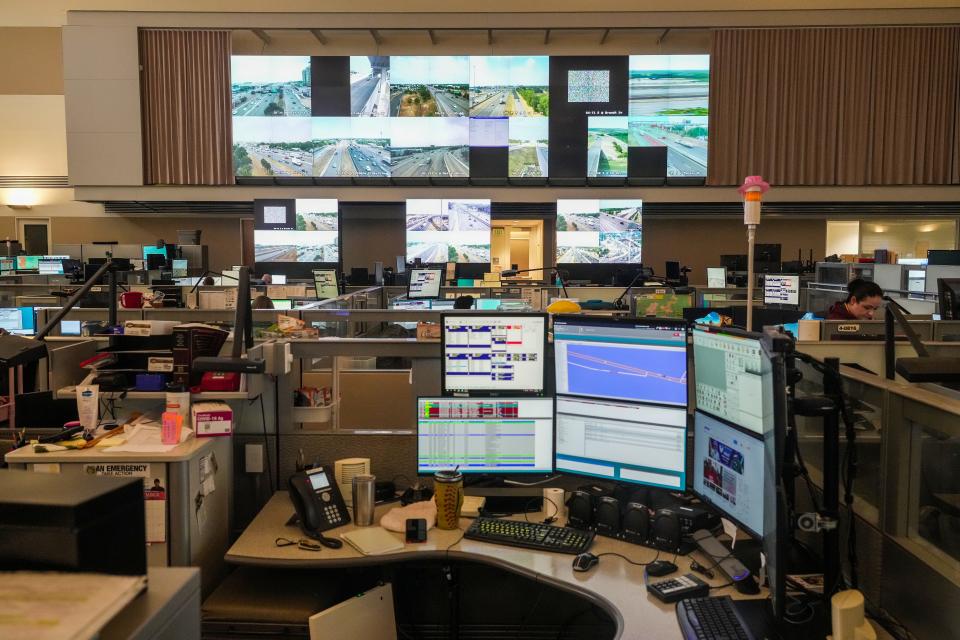
How have city, county responded to the shortages?
To fill some of the gaps, the Police Department is paying sergeants overtime to work in the call center. On the low end, a sergeant can make $102,993 a year without overtime. The Police Department had spent nearly $32 million on overtime for all personnel this fiscal year through mid-June, according to a recent presentation by the department for the city's Public Safety Commission.
Calagna said the city increased pay to $23.85 an hour for call takers and $25.42 an hour for dispatchers to recruit more people. Additionally, the city is offering monthly stipends and sign-on bonuses to help with recruitment and retention.
In Travis County, supervisors have also been working to help take calls in addition to their other duties.
The Commissioners Court recently offered some help in the county's latest budget by allowing employees to sell back some of their accrued vacation time so they don't lose it, as was happening before.
The union is pushing for stipends for county employees similar to what the city is offering, which would be three $1,000 payments a year. Such stipends would need to be approved by the Commissioners Court.
The sheriff's office, however, said its current overtime incentive program of $500 after working an extra 24 hours in a four- to five-week period can equal $6,000 a year.
Employees can also receive a $750 stipend if they recommend someone to join the force.
'Take care of these people'
Despite not getting through to a 911 call taker, Michalka said he understands why not many people are lining up to take the job.
Although Michalka said he and his wife aren’t likely to have medical emergencies, he worries about vulnerable populations in the city that need emergency services frequently.
"I don't see this as a reflection of the people that are doing the work at all," Michalka said. "It seems like there's these economic pressures that nobody's going to fill. And that's kind of concerning. ... Let's take care of these people who are doing this incredibly stressful and difficult job that’s necessary just to live in a society.”
This article originally appeared on Austin American-Statesman: Austin, Travis County 911 call centers dealing with low staffing

